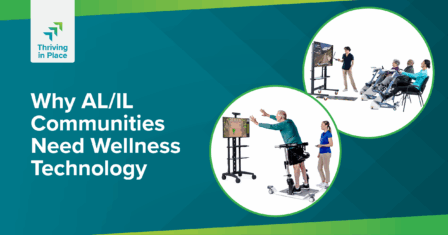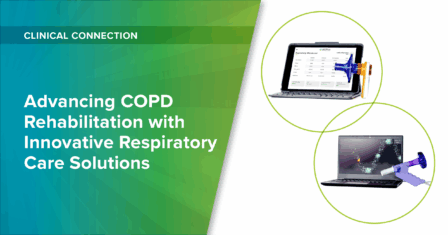Shortwave Diathermy: A Drug-Free Approach to Pain Management

The highlights:
- Shortwave Diathermy (SWD) is a therapeutic treatment that uses high-frequency electromagnetic waves to generate heat within body tissues, providing non-invasive, drug-free pain relief.
- SWD can effectively manage several types of pain, including joint, post-operative, post-traumatic, and chronic pain. It also increases local blood flow, relieves muscle spasms, decreases joint stiffness, and helps treat chronic inflammatory conditions.
- ACP’s OmniSWD system offers built-in clinical protocols, making it easier for clinicians to use. It achieves therapeutic thermal doses with 25% greater efficiency, saving time and improving patient outcomes.
Pain impacts more than 30% of long-term care residents. In addition to reducing quality of life, pain can limit patients’ ability to perform activities of daily living (ADLs), restrict their ability to socialize, and lead to depression.1 Effectively managing pain is essential to helping patients maintain a high quality of life, improve mobility, and promote healing. Innovative technologies like shortwave diathermy (SWD) can be a valuable tool for clinicians seeking to deliver effective, non-invasive, and drug-free pain relief. In this post, we’ll explore what shortwave diathermy is, how it works, and how it can be a valuable pain management tool.
What is Shortwave Diathermy?
SWD is a therapeutic treatment modality that uses high frequency pulsed electromagnetic waves to generate therapeutic heat within the body tissue. SWD can be applied for subthermal or thermal effects, penetrating deeply enough to reach muscles, joints, and soft tissues without overheating the skin. In addition to providing an analgesic effect, the heat also increases local blood flow, providing a safe and effective means of addressing pain and inflammation stemming from common conditions like contractures, slow-healing wounds, joint stiffness, and more.

The Benefits of Shortwave Diathermy in Pain Management
SWD offers several indications for common types of pain, including:
In addition to providing effective pain relief, SWD can:
I am pain-free and walking with a cane. I am looking forward to attending my sister’s baby shower.
Mr. Mickens on his treatment with OmniSWD and OmniCycle
OmniSWD® Shortwave Diathermy System
ACP’s OmniSWD Shortwave Diathermy System simplifies the integration of SWD into patient care by offering built-in clinical protocols for six indications. This feature removes the guesswork from selecting the appropriate therapy, ensuring safe and effective treatment. Additionally, the OmniSWD system enhances efficiency by delivering therapeutic thermal doses with 25% greater effectiveness, saving valuable time for clinicians and improving patient outcomes.
Soothe Pain & Accelerate Recovery with OmniSWD®
Empower your therapists to save time and achieve superior patient outcomes with ACP’s advanced OmniSWD Shortwave Diathermy System.
MRK-BLOG-013
- Shrestha, S., Cummings, G., Knopp-Sihota, J., et al. (2024). Factors influencing health-related quality of life among long-term care residents experiencing pain: A systematic review protocol. Systematic Reviews, 13(49). https://doi.org/10.1186/s13643-024-02459-7 ↩︎
- Van Nguyen, J., & Marks, R. (2002). Pulsed electromagnetic fields for treating osteo-arthritis. Physiotherapy, 88(8), 458-470. https://doi.org/10.1016/S0031-9406(05)60848-6 ↩︎
- Santiesteban A. J., & Grant, C. (1985). Post-surgical effect of pulsed shortwave therapy. Journal of the American Podiatry Association, 75(6), 306-309. https://doi.org/10.7547/87507315-75-6-306 ↩︎
- Draper, D. O., Abergel, R. P., Castel, J. C., & Schlaak, C. (2000). Pulsed short-wave diathermy restricts swelling and bruising of liposuction patients. American Journal of Cosmetic Surgery, 17(1), 17-20. https://doi.org/10.1177/074880680001700105 ↩︎
- Fukuda, T., da Cunha, R., Fukuda, V. O., Rienzo, F. A., Cazarini, C. Jr., Carvalho, Nde A., & Centini, A. A. (2011). Pulsed shortwave treatment in women with knee osteoarthritis: A multicenter, randomized, placebo- controlled clinical trial. Physical Therapy, 91(7), 1009-1017. https://doi.org/10.2522/ptj.20100306 ↩︎
- Karasuno, H., Morozumi, K., Fujiwara, T., Goh, A. C., Yamamoto, I., & Senga, F. (2005). Changes in intramuscular blood volume induced by continuous shortwave diathermy. Journal of Physical Therapy Science, 17(2), 71-79. ↩︎
- McCray, R. E., & Patton, N. J. (1984). Pain relief at trigger points: A comparison of moist heat and shortwave diathermy. Journal of Orthopaedic and Sports Physical Therapy, 5(4), 175-178. https://doi.org/10.2519/jospt.1984.5.4.175 ↩︎
- Leung, M. F. S., & Cheing, G. L. Y. (2008). Effects of deep and superficial heating in the management of frozen shoulder. Journal of Rehabilitation Medicine, 40(2), 145-50. https://doi.org/10.2340/16501977-0146 ↩︎
- Peres, S. E., Draper, D. O., Knight, K. L., & Ricard, M. D. (2002). Pulsed shortwave diathermy and prolonged long-duration stretching increase dorsiflexion range of motion more than identical stretching without diathermy. Journal of Athletic Training, 37(1), 43-50. ↩︎
- Szlosek, P. A., Taggart, J., Cavallario, J. M., & Hoch, J. M. (2014). Effectiveness of diathermy in comparison with ultrasound or corticosteroids in patients with tendinopathy: A critically appraised topic. Journal of Sports Rehabilitation, 23(4), 370-375. https://doi.org/10.1123/jsr.2013-0063 ↩︎
Pain impacts more than 30% of long-term care residents. In addition to reducing quality of life, pain can limit patients’ ability to perform activities of daily living (ADLs), restrict their ability to socialize, and lead to depression.1 Effectively managing pain is essential to helping patients maintain a high quality of life, improve mobility, and promote healing. Innovative technologies like shortwave diathermy (SWD) can be a valuable tool for clinicians seeking to deliver effective, non-invasive, and drug-free pain relief. In this post, we’re exploring what shortwave diathermy is, how it works, and how it can be a valuable pain management tool.
Latest Updates
Subscribe to stay up-to-date on our latest posts.




